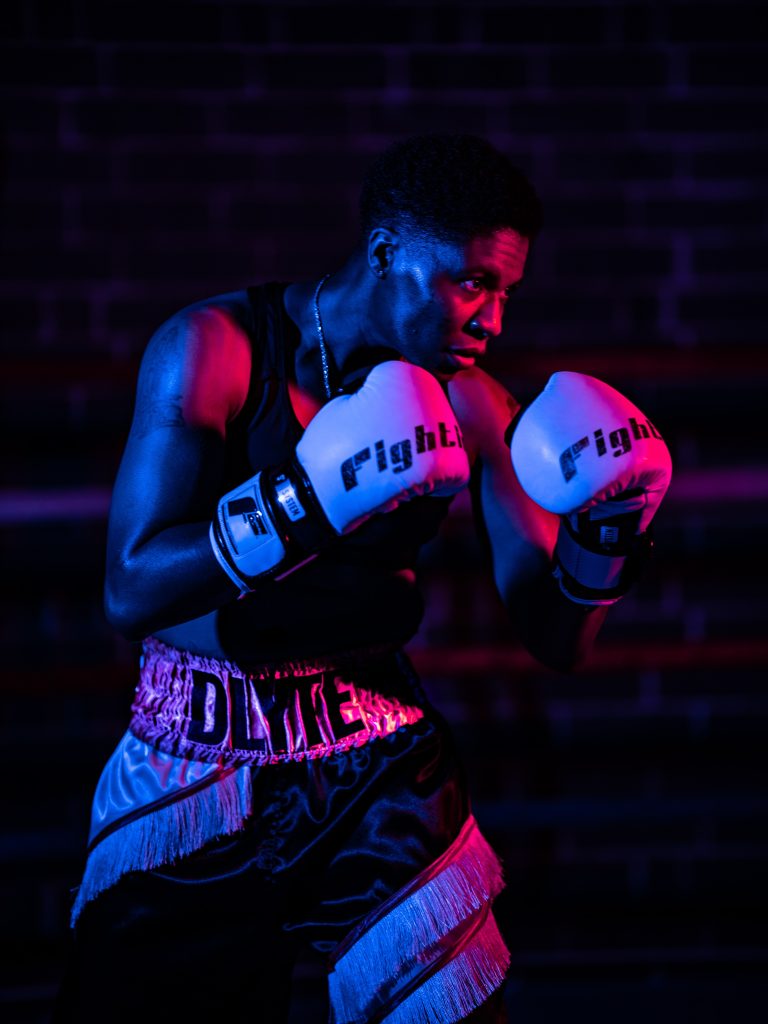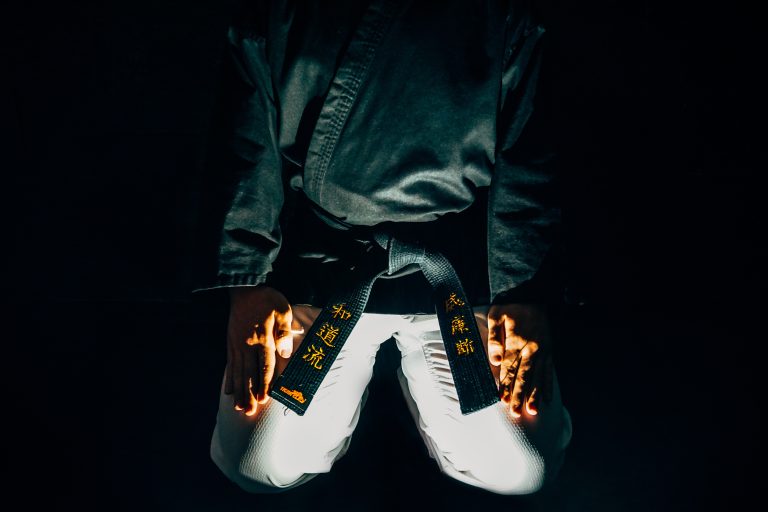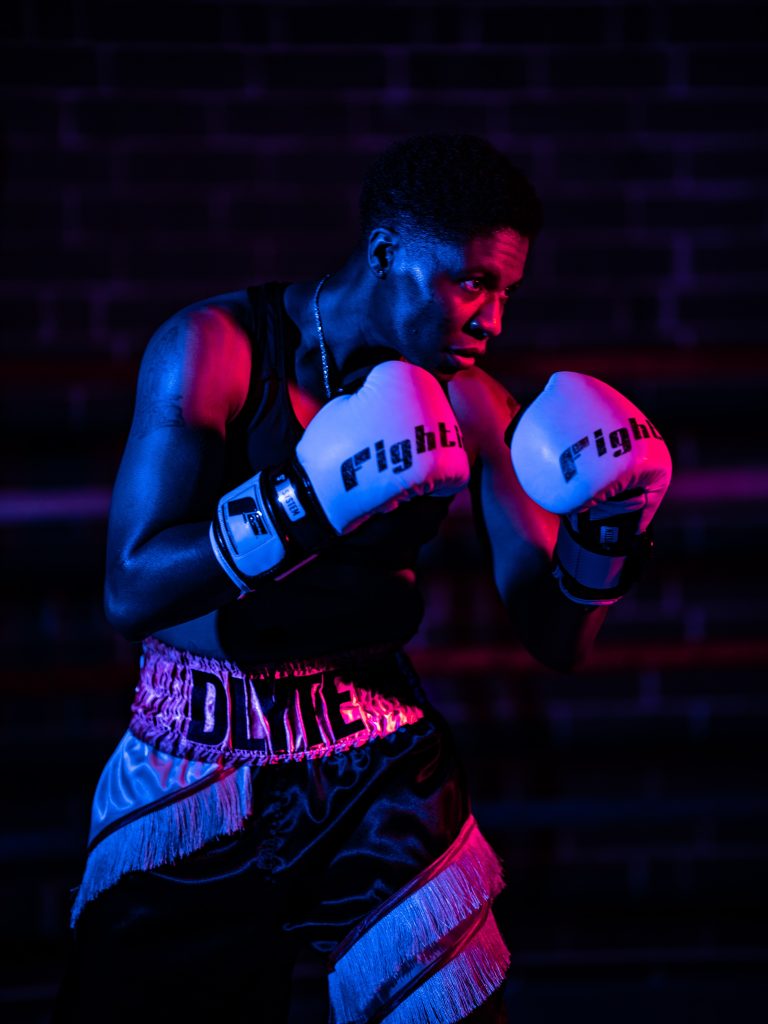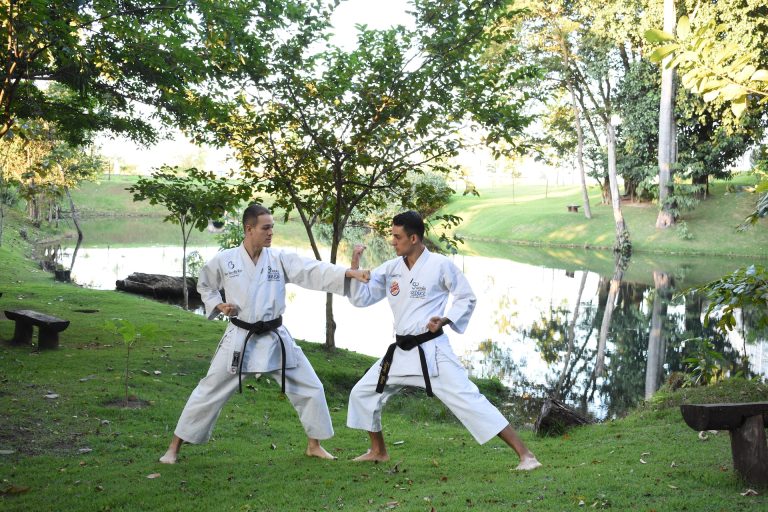What is the Difference Between Traditional and Competitive Karate?
Karate is one of the most popular martial arts around the world, and has been practiced by millions of people for centuries as a form of self-defense, exercise, and competition. However, there are two very different interpretations of the martial art, and each approach has its own strengths and weaknesses. Traditional karate focuses on the non-competitive aspects of the practice while competitive karate focuses on competition. So what is the difference between traditional and competitive karate and which should you choose to practice?
The History of Karate
Karate has its origins in Japan, where it began as an unarmed martial art as early as the 1300s. The name “karate” translates literally to “empty hand,” and the practice was traditionally focused on practical self-defense rather than competitive sports. Over time, the practice spread to Okinawa and then to China, where it became integrated with various other unarmed and armed martial arts.
By the early 20th century, karate had spread to the West, where it was embraced by practitioners as a non-competitive self-defense martial art. During this period, traditional karate was focused on self-improvement and developing physical and mental discipline. However, in the 1950s and 60s, competitive karate emerged as a popular sport across Japan and eventually, the rest of the world. This competitive version of the martial art was focused on winning matches rather than self-improvement or physical discipline, although these aspects are still valued even in competitive karate.
Traditional Karate
Traditional karate is a non-competitive form of the martial art that is focused on self-improvement. It does not involve any competitions or tournaments and practitioners focus solely on developing their skills as a self-defense technique. Traditional karate emphasizes control, discipline, accuracy and grace rather than power or speed. It is practiced at a slow pace and requires practitioners to be mindful and focused on their movements and techniques. The main goal of traditional karate is to help practitioners better understand themselves, develop self-control, increase their flexibility and reduce stress.
Benefits of Traditional Karate
Traditional karate is a great way to stay in shape and learn self-defense. It is also an effective way to build physical and mental discipline as well as confidence. Practitioners of traditional karate often feel calmer and more self-confident after a session. Additionally, it is an excellent way to socialize with others who are in interest in self-defense or martial arts in general as many traditional dojo’s operate like clubs or communities.
Competitive Karate
Competitive karate is a relatively new form of the martial art that has become particularly popular in recent years. The goal of competitive karate is to win matches based on predetermined criteria such as accuracy, power and agility. The focus of the practice shifts away from self-improvement to winning competitions. This type of karate is practiced at a faster pace than traditional karate as practitioners must focus on speed and evasion in order to win matches.
Benefits of Competitive Karate
Competitive karate provides an opportunity for practitioners to test their skills in a challenging environment with an exciting sense of competition. It can also help improve physical fitness and agility, as well as offer practitioners a chance to measure their progress over time. Additionally, it is an effective way to build confidence and prepare for self-defense situations outside the ring or dojo.
Deciding Between Traditional and Competitive Karate
The decision whether to practice traditional or competitive karate comes down to personal preference. Both forms of the martial art offer unique benefits and can be equally rewarding if practiced correctly. Those who are interested in improving their fitness and strength may prefer competitive karate, while those who prioritize discipline and self-improvement may prefer traditional karate. Ultimately, each person must decide which approach best suits their goals or personal interests.
Finding a Karate School
Once you have decided which style of martial arts to pursue, you should look for a school that offers classes in that discipline. When searching for a dojo or school, it is important to look for one that suits both your own needs and skill level as well as those of any children you may be bringing along. Setting preferences such as distance from home or timeslot availability can also help narrow down your search. Additionally, asking other practitioners of that discipline or style as well as reading customer reviews can provide useful insights into potential dojos and schools.
Conclusion
Traditional karate focuses primarily on developing physical and mental discipline while competitive karate is geared towards mastering techniques for tournament or match purposes. Each form provides its own unique set of benefits, so which type you choose should depend on your personal interests. Whichever path you choose, it is important to find a school that suits both your skills and needs as well as those of any children you may be bringing along. With the right school and focus, you can become adept at whichever form of the martial art you choose to pursue.
What is the Difference Between Traditional and Competitive Karate?
Karate has been around for centuries and has evolved to include different styles and approaches. Traditional Karate and Competitive Karate are two popular forms of Karate. Despite having similar roots, the two martial arts styles differ in terms of their philosophy, techniques, and goals. In this post, we will explore the differences between Traditional Karate and Competitive Karate and help you choose the best one for you.
What is Traditional Karate?
Traditional Karate is a martial art that originated from Okinawa, Japan, and has a history spanning over 500 years. It aims to develop one’s physical and mental discipline through the practice of techniques, forms, and sparring. Traditional Karate places a strong emphasis on self-defense, and practitioners are taught to use their techniques only for protection.
One of the essential aspects of Traditional Karate is the emphasis on kata, a sequence of techniques that simulate a conflict with an imaginary opponent. Practitioners of Traditional Karate spend a significant amount of time training on kata to perfect their techniques, timing, and breathing.
Another essential aspect of Traditional Karate is its philosophy of humility, respect, and discipline. Practitioners are expected to show respect to their instructors, fellow students, and even opponents, both on and off the mat.
What is Competitive Karate?
Competitive Karate, on the other hand, is a sport that involves competition between two athletes. It has evolved from traditional Karate and focuses more on scoring points by striking the opponent through punches, kicks, and other strikes. The goal is to score more points than the opponent within a set time limit or to knock the opponent out.
In Competitive Karate, the emphasis is on sparring and developing the speed, power, and accuracy of strikes. Techniques used in Competitive Karate may differ from those used in Traditional Karate, with practitioners being encouraged to use techniques that score higher.
Competitive Karate also has a different philosophy from Traditional Karate. While respect and sportsmanship are still essential aspects of Competitive Karate, winning takes priority over everything else.
What are the Key Differences Between Traditional and Competitive Karate?
| Traditional Karate | Competitive Karate |
|---|---|
| Emphasis on perfecting kata techniques | Emphasis on scoring points in sparring |
| Self-defense is the primary goal | Winning is the primary goal |
| Philosophy of humility, respect, and discipline | Winning takes priority over everything else |
Which Style is Right for You?
The answer to this question depends on what you want to achieve through Karate. If you’re looking for a martial art that will help you develop physical and mental discipline and self-defense skills, then Traditional Karate may be the right choice for you. Traditional Karate can also help you build character and instill a sense of humility and respect.
On the other hand, if you’re interested in Karate as a sport and want to compete and win at tournaments, then Competitive Karate may be more suited to your goals.
It’s crucial to note that both Traditional and Competitive Karate have their benefits and drawbacks. Practitioners of Traditional Karate may find themselves ill-prepared for the rules and scoring system of Competitive Karate tournaments. At the same time, practitioners of Competitive Karate may find themselves lacking in self-defense skills.
Conclusion
In conclusion, Traditional Karate and Competitive Karate are two different styles of Karate practiced with varying goals and techniques. Traditional Karate emphasizes perfecting kata techniques, self-defense, and maintaining a respectful and disciplined attitude. In contrast, Competitive Karate focuses more on sparring and scoring points, with winning being the primary goal.
Ultimately, the style of Karate that is right for you depends on your goals and what you wish to achieve through martial arts practice. Whether you choose Traditional Karate or Competitive Karate, the most important thing is to find a qualified instructor, stay committed to your practice, and strive to become better every day.
Inhaltsverzeichnis






